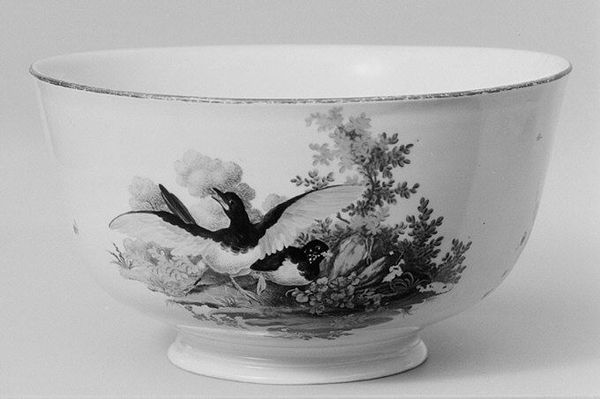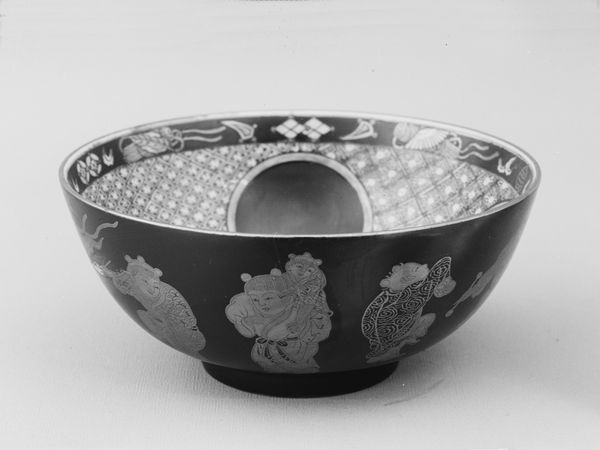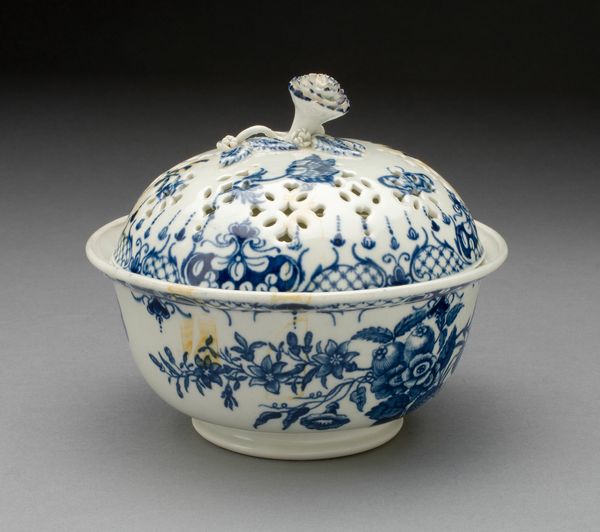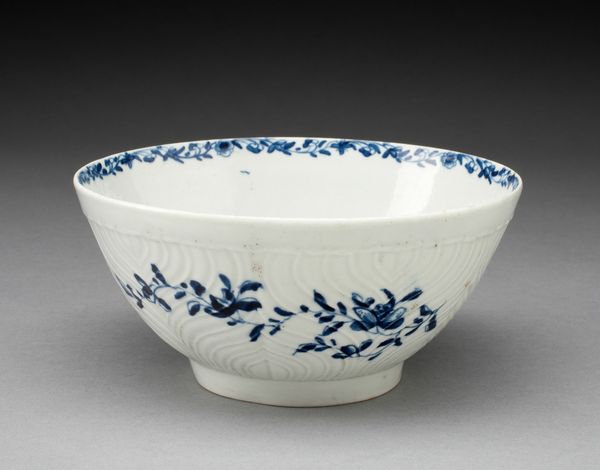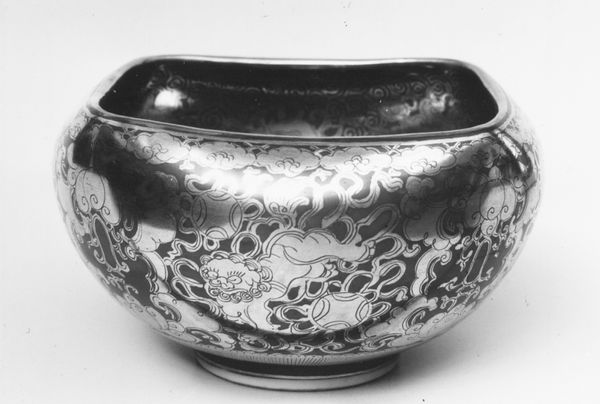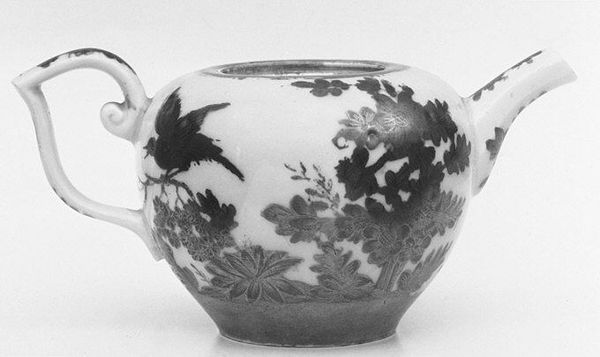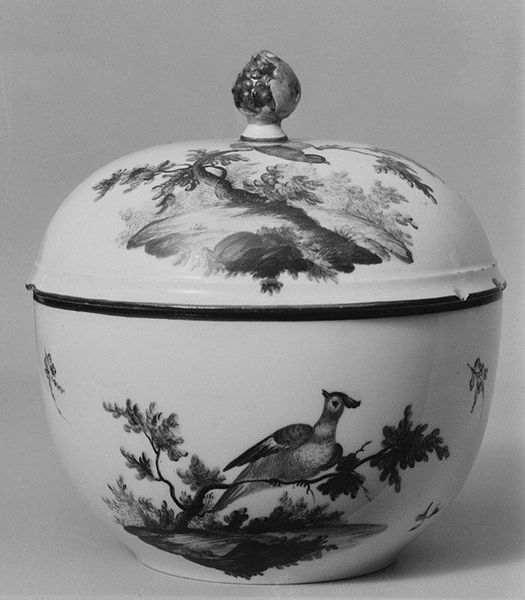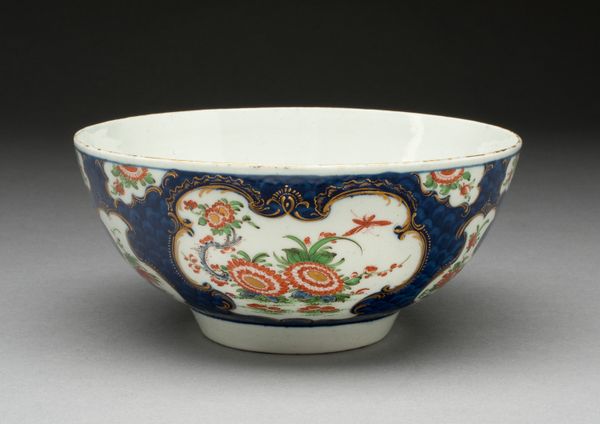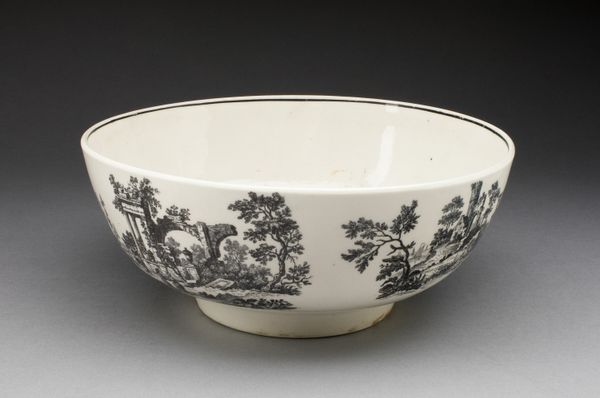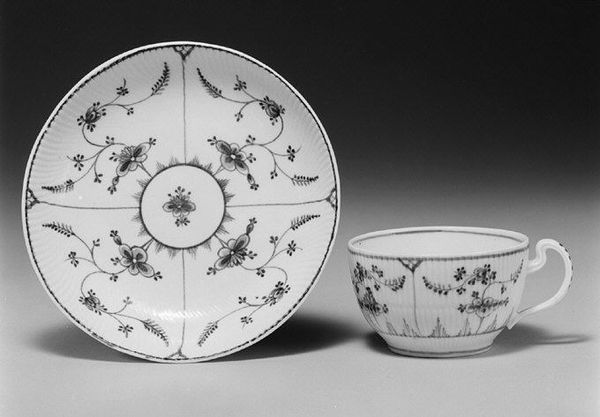
tempera, ceramic
#
tempera
#
asian-art
#
ceramic
#
orientalism
Dimensions: H. 3 in. (7.6 cm); Diam. 4 1/2 in. (11.4 cm)
Copyright: Public Domain
Curator: What a fascinating object. This is a "Bowl with Cover" made sometime between 1665 and 1685, attributed to Kakiemon I. It is crafted from ceramic and adorned with tempera. Editor: My first impression is one of delicate power. The white porcelain provides a serene backdrop for the dynamic dragons painted across the bowl and lid. It makes you wonder about the use of this particular artwork. Curator: Indeed. Examining the historical context, we can see how objects like this bowl reflect evolving cultural exchanges. The Kakiemon workshop emerged during a time of significant socio-political shifts in Japan, and their porcelain was highly sought after by European traders. These objects became powerful symbols of the exotic East, influencing Western aesthetics and collecting practices. Editor: Exactly! Considering its production, the meticulous handcraftsmanship is clear. We see not only technical skill but also a kind of dialogue between material and artist. Each brushstroke involved countless hours of labour. Tempera paint on ceramic demands the experience, mastery, and knowledge. Curator: Looking at the dragons, we must consider how this symbol intersects with broader power dynamics of the time. In Asian iconography, dragons represent strength, wisdom, and imperial authority. But within the context of trade and cultural appropriation, what did these images mean to European consumers? What stereotypes were they reinforcing, or challenging? Editor: I'm particularly interested in the means of consumption here. This piece, by virtue of its function, connects directly to sustenance and hospitality. A bowl is not merely a decorative object, but an integral component to everyday existence. In the right context, we could assume a shared bowl would encourage dialogues about communal activities and material accessibility, but its design marks this bowl as more upper class. Curator: Those points highlight how art objects are embedded in networks of meaning. To unpack these complexities, we must delve deeper into questions of identity and power. Editor: Absolutely. It reminds us that every material has a story and it has different stories based on where we encounter and interact with the item. Curator: It is very illuminating. It urges us to look beyond aesthetics and grapple with the legacies of orientalism, trade, and representation. Editor: A testament to the layered narrative that objects hold within themselves, waiting to be uncovered with material awareness and curiosity.
Comments
No comments
Be the first to comment and join the conversation on the ultimate creative platform.
